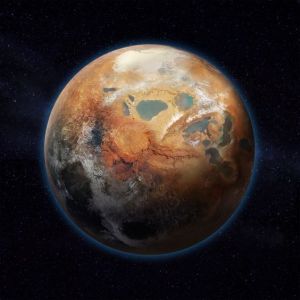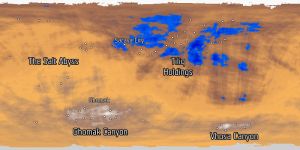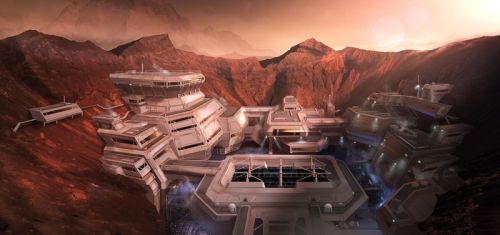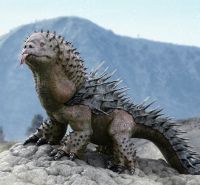Sacaya
| Astrographical Information | |
|---|---|
| Region | Outer Rim |
| Sector | Kanz Sector (Halo Frontier) |
| System | Sacaya |
| Suns | 1 (Sacaya, red giant) |
| Orbital Position | 4th |
| Moons | 1 |
| Coordinates | M-4 |
| Rotation Period | 28 standard hours |
| Orbital Period | 352 local days |
| Planetary Information | |
| Class | Terrestrial |
| Climate | Diverse (Arctic to Arid) |
| Atmosphere | Type I |
| Gravity | Standard |
| Primary Terrain | Mountainous |
| Societal Information | |
| Native Species | Crag-hunters, Sacayan rocs, cliff-wolves |
| Immigrated Species | Diverse |
| Primary Language | Galactic Basic Standard |
| Government | Townships; Corporate (Tiliq Mining Consortium) |
| Population | 1.5 million |
| Major Cities | Sacaya City (pop 500,000, Tiliq-owned spaceport); other small mining towns and corporate installations |
| Major Imports | Food, Technology |
| Major Exports | Ore and Refined Metals/Minerals |
| Affiliation | Galactic Empire (nominal) |
| Mechanical Information | |
| Astrogation | Hyperspace Backwater: Located as far from hyperspace routes as it is, Sacaya adds |
| Knowledges | Outer Rim x • Education x • Lore x • Underworld x • Warfare x • Xenology x |
| Rarity Modifier | +2 |
| Other Mechanics | None |
An ore-rich world claimed by the Tiliq Mining Consortium. Though the Consortium has several facilities on the planet, they also sell commissions for others to set up operations there as well, charging high prices for the possibility of making a great deal of money. Tiliq is home to several barebones mining commune-colonies, groups of people who all pitch in to purchase the commission and work the mines, ideally splitting the profits (when there are any).
Imperial Presence
The Empire maintains what might be at best called a token presence on Sacaya.
- Governor Jana Arkmeds: Imperial Governor. A woman who seems to deeply resent her assignment on Sacaya, and spends as much time as she can reasonably get away with on Halo Station, Governor Arkmeds clearly holds Sacaya in contempt. She has offices and finely appointed housing in Sacaya City, as well as a residence in the Estates under the Dome of Halo Station.
- Sacaya Batallion: Imperial Army. A single batallion of the Imperial Army is situated on Sacaya, its four companies divided among the three Imperial bases on the small wasteland world.
- Sacaya City Garrison: The first base is located just outside of Sacaya City. Two companies are always on-base, although they rotate out with the companies in the other garrisons. Part of the companies here are often partially on leave locally.
- Roc Mesa Base: The second base is atop a mesa about halfway between Sacaya City and Ghomak Canyon, at what is effectively the mouth of the Salt Abyss. The company here has a mandate to guard against ore-raiders and other troublemakers.
- Redwater Base: The third base is located next to a large body of water north of Vhosa Canyon, and was established as a quick-strike location should trouble develop in Vhosa Canyon. It also serves to protect the Canyons and Holdings from raiders out of the Salt Abyss.
- Sacaya Wing: Imperial Navy. A wing of TIE fighters is divided between the three garrison bases to provide air support to the efforts of the base commanders. Each of the bases houses two squadrons (24 total TIE fighters), which are usually flying patrols throughout the landscape, or around Sacaya's system.
- Halo Frontier Patrol Force: Admiral's Line: The admiral of the Halo Frontier Patrol Force, Admiral Ailyn Harind, frequently uses Sacaya as a base from which to patrol the Void perimeter. She tends to leave at least two of her line's vessels (a Lancer frigate, a Vigil frigate, and a Surveyor recon frigate) in orbit while she is present, landing her flagship, the Sineval, and one of her line's other vessels at the Sacaya City Garrison.
Geographical Features
Sacaya is made up of mostly of canyons and razor-topped outcroppings of rock scoured into whirling patterns by grit-heavy winds. Water is present in the world mainly in standing pools, mineral-heavy after successive evaporation cycles. Moisture-farming supplements most of the mining here, and every mining installation that isn't supported by the Consortium is surrounded by multiple moisture farms. Cavern-farming is also fairly common, taking advantage of moisture accumulation in cavern areas out of the red sunlight, with grow-lights bolted directly to the ceilings of the caverns.
The Tiliq Holdings
Laying claim to the most prevalent natural sources of water, the Tiliq Mining Consortium has built its mining installations in close proximity to the thick cluster of salt lakes of Sacaya.
- Sacaya City: Population 500,000 • The largest city on Sacaya is only about a half-million in population. Located on the shore of one of the largest bodies of water on-planet, the city has a sort of stark beauty, nestled as it is among the sandstone spires that protect it from the worst of the winds. Modest-sized skyscrapers stand at its heart, the downtown core protected by a shield that protects from winds; the rest of the city is made up of relatively short and fairly rounded structures to cut down on the erosion from winds. In contrast to most of the mining installations around the Holdings, it is made up of a diverse variety of folks, only some of whom are Tiliq contractors. Sacaya City is also the site of the main Imperial garrison on Sacaya. Though the city has a mayor and a city council, there is no question that they are puppets for the Tiliq Mining Consortium – no one who isn't supported by the corporation ever actually runs for public office in the city.
- Tiliq Mining Installations: Population 2000 - 10,000 each. • Built nestled into the stone bluffs into which the mines are drilled, Tiliq mining installations are fine state-of-the-art structures that feature a great deal of automated mechanisms for moving ore, mining fleets of Q-4 mining droids that accompany mining teams into shafts, and strong safety regulations. What they also tend to include are folk whose pay is barely sufficient to cover the cost of the corporate housing they are charged for, even if those folk live existences of greater luxury and safety than most on the face of Sacaya.
- Water Refineries: Population up to 10,000. • Along the shores of the salt lakes are many Tiliq facilities that draw water out of those lakes, filter the salts and minerals out of it, and pump it into a system of pipelines to feed the various mining installations around the Holdings.
- Crop Holders: Population up to 5000. • In order to supplement the food the company imports to Sacaya for its populace, fifty years ago Sacaya started granting cavern-farming permits on fifty-year leases. Providing access to deep caverns (many of which were played-out Tiliq mines) and some basic agricultural equipment, Tiliq drew some farmers to the Holdings to use the cavern-farming techniques developed in the Ghomak Canyons. Though the contracts for those settlements aren't anywhere near as harsh as those for miners at mining installations, they are still sufficiently strict that not many have taken them up on the offer. As such, there are fewer crop holders in the Holdings than in Ghomak Canyon.
Ghomak Canyon
A low-slung canyon with high walls that shield most of it from the winds that blow in off the Salt Abyss, Ghomak Canyon is home to many of the freeholders in Sacaya. Its mines are nowhere near as finely equipped as those of the Tiliq installations, but the folk who work them are there freely (even if it is something of a last resort for some unfortunate souls).
- Ghomak: Population 80,000. • The largest town in the Canyon, Ghomak also guards the most reliable gate into the Canyon. As such, most land vehicles that come into the Canyon go through Ghomak. The settlement is also the major trading outpost in the Canyon, meaning that many folk from the mining settlements in the area come here to sell ore and buy supplies. The biggest buyer in the area is the Slayn & Kopril representatives, who have a private landing pad where freighters carry crates of raw ore to the orbital refinery owned by the corporation. Though not a spaceport proper, Ghomak boasts several independent landing pads, complete with mechanics on hand who can take care of repairs or just keep an eye on the vessel.
- Other Settlments: Population up to 5,000. • The other settlements of the Canyon feature small round-roofed buildings that feature lots of circular designs made up of a combination of the sandrock (made from the local grit) and permacrete. These settlements are all built around a mine or set of mines, with most of the denizens either working the mines or working in businesses that cater to them.
- Crop Holders: Population up to 2000. • The crop holders of the Ghomak Canyon innovated most of the cave-farming that happens on Sacaya. They gather in small farmer communities with buildings similar to those in the mining settlements. They always include several moisture farming farms all around them, as their cavern fields do require plenty of water (relatively speaking).
- Moisture Farmers: Population up to 500. • Small clusters of moisture farmers can be found scattered along the open canyon floor and the upper ridges of the Ghomak Canyon, taking advantage of the open air spaces to run vaporator banks. They frequently built their homes half-submerged into the ground, both to allow open air for vaporators and to protect from wind and heat.
Vhosa Canyon
Originally discovered and settled by ore raiders, the settlements of Vhosa Canyon eventually settled into a somewhat law-abiding culture, effectively casting out those wilder, more violent elements from their number. Though they're no longer a haven where ore raiders can hide, the folk of Vhosa are still the descendants of thieves and murderers, and have a reputation as a bit wilder than Ghomak-folk or Holdings-dwellers. By and large, the mines and hydroponics caves of Vhosa are younger and less developed than those of other places, though they operate and organize similarly.
Approximately fifteen years ago, as Vhosa's ore and crops started showing up in Ghomak for trade, the Tiliq Mining Consortium decided that they were civilized enough to be worth approaching with demands of contractual bindings, including arrears on the lands that (by corporate views) they'd been squatting on for several generations. What broke out was an all-out conflict between Tiliq security forces and mercenaries and the people of Vhosa. The conflict continued for nearly five years before the arrival of the Empire as part of the Pacification of the Kanz Sector. The threat of Imperial interference was sufficient to bring Vhosa and Tiliq to the table, where they ironed out the conditions that the Vhosa settlements exist under today, which please neither side but are workable, at least for the moment.
The Salt Abyss
The great salt flats that take up roughly half of Sacaya's surface are broken up by rocky outcroppings that rise up from the white-orange of the desert sands (which the sunlight casts in a slightly redder tinge).
- Abyss Settlements: Population up to 1000. • x
- Jawa Crawlers: Population up to 100 per crawler. • At some point between one and two hundred years ago, a small band of Offworld Jawas (as those who leave Tatooine are called) found their way to Sacaya. There are now as many as a dozen separate Jawa crawlers out in the wastelands of Sacaya, where they hunt up ores and pelts from cliff-wolves to sell or trade.
- Ore Raider Bands: Population up to 300 raiders. • Dozens and dozens of ore-raider bands make their homes in the Salt Abyss, moving from watering hole to hidden encampment in between their raids on Abyss settlements. Every so often, a charismatic leader will rise among the bands, and they'll join together multiple groups for a big raid on one of the Canyons or even some of the outlying Holdings.
Weather
Sacaya's weather tends toward heat, particularly along its equator. Toward the poles, the weather cools to some degree, and night can become positively frigid at certain times of the year. Rainfall is almost entirely unknown here. Occasionally, salt typhoons blow in out of the Salt Abyss, great whirling storms of jagged scouring minerals. There is a particular time of the year when these happen more often, but they can hit at any time and are frequently many kilometers across.
Native Species
The craggy face of the planet has given rise to a variety of native species, none of which are sapient. The Crag-hunter is a low-slung lizard-like beast with a sinuous snaky tail that it uses to propel itself through loose sand that settles in the bottom of deep canyons. Crag-hunters lay in rocky crags filled with sand and wait for something to stumble by, bursting up out of the sand and making quick work of it with a toxic bite (toxic not because of venom, but because of how enzyme- and bacteria-ridden its mouth is).
The Sacayan roc is a massive primitive bird, with jaws and teeth rather than beak. Standing between three and four meters, with a wingspan several times that, they are mighty hunters who sail the thermals of the hot red planet. When they see prey, they fold their winds and dive bomb it, landing on it with both clawed feet, stunning with the strike. It then carries away its stunned prey, dropping it from a height if it wakes and starts struggling. They are capable of fighting on the ground, but prefer their dive-bomb methods of hunting to standing and fighting.
There is also a canid-type creature referred to as a cliff-wolf, so named for its billy-goat-like ability to scale sheer cliffs. The locals have tried to domesticate them, but no one has had anything more than modest success at the endeavor. Cliff-wolf fur is highly prized, especially toward the poles.
The Sacaya System
| Planet | Type | Moons |
| Sacaya (Sun) | Star (Single Red Giant) | None |
| Osebra | Gas Giant | 3 + Rings |
| Chynbrynyr | Moderate Terrestrial (Toxic Desert) | 3 |
| Sacaya | Moderate Terrestrial (Diverse Mountains) | 1 |
| Arlyngal | Gas Giant | 14 |



